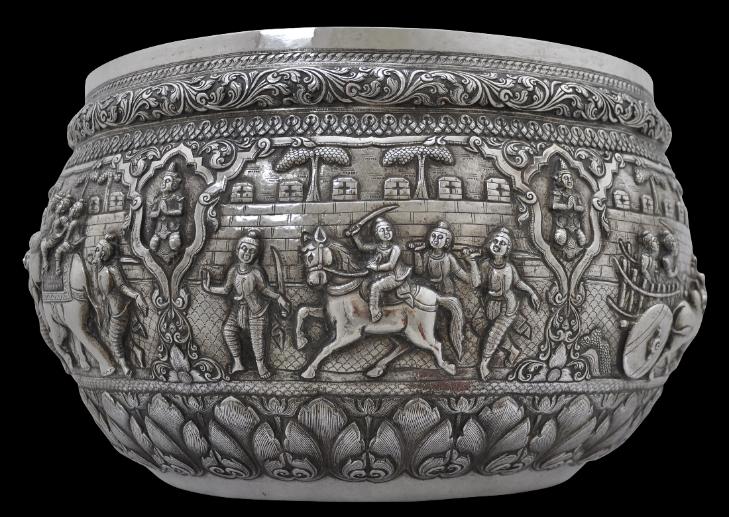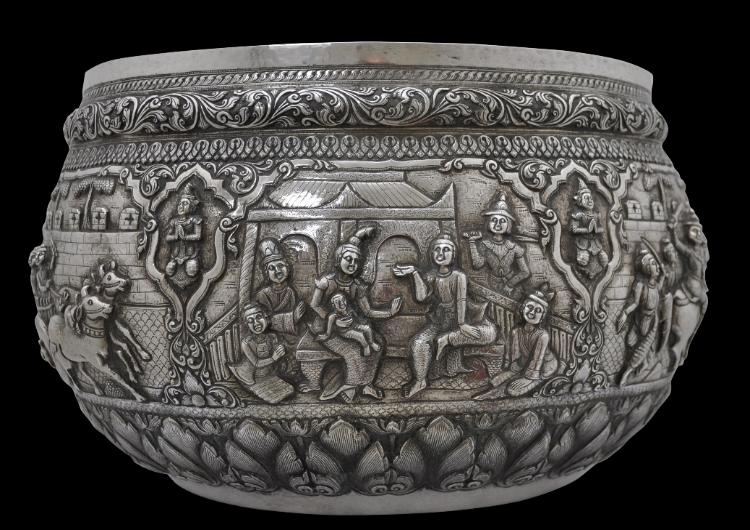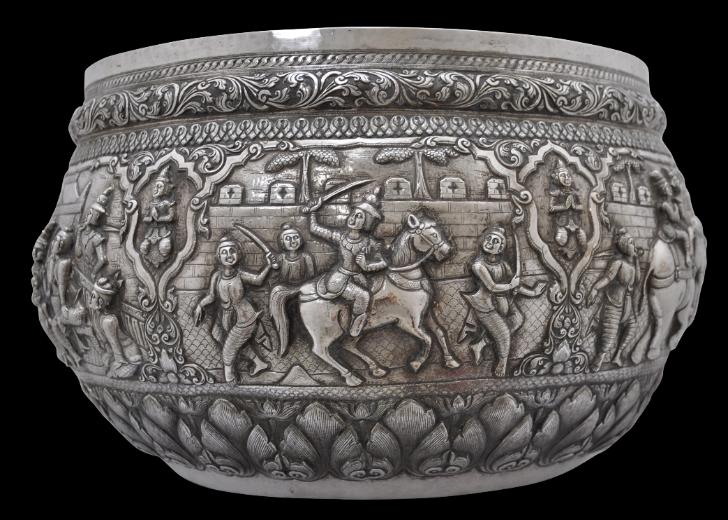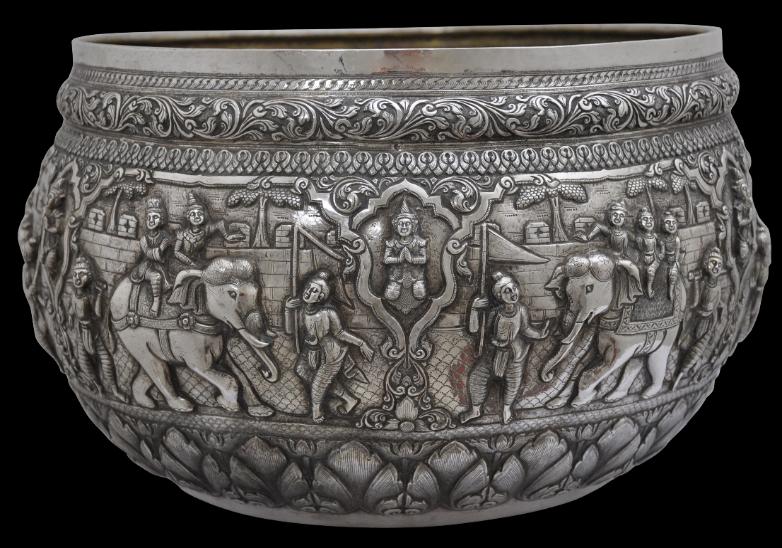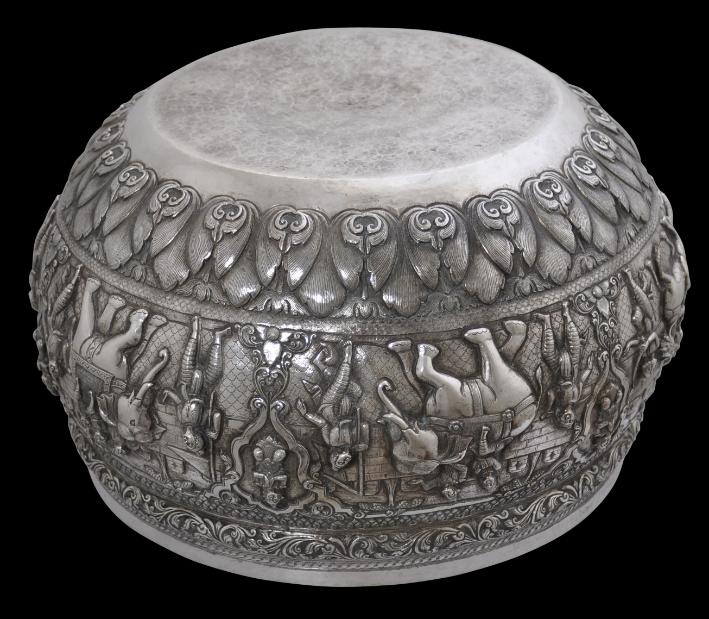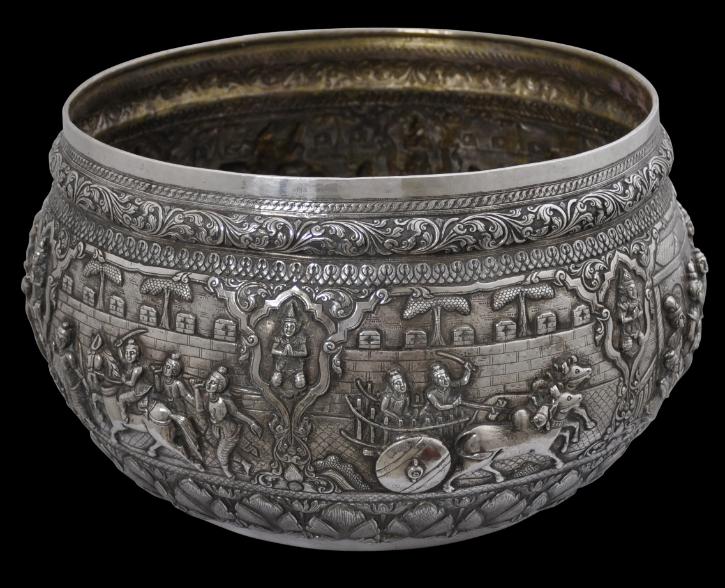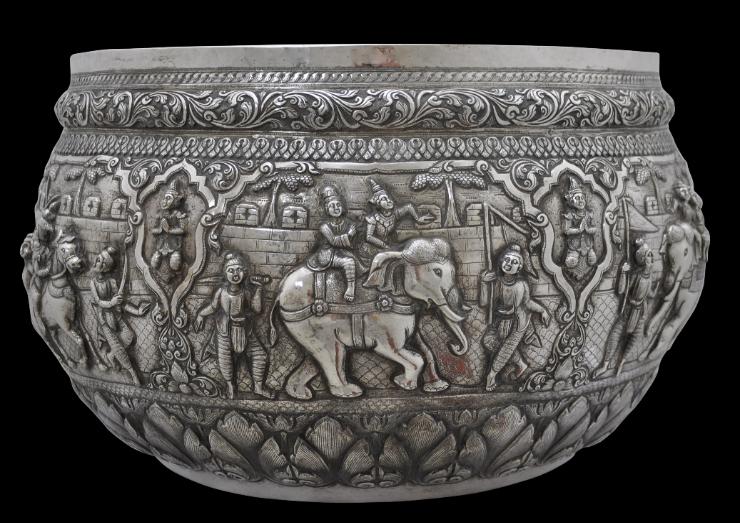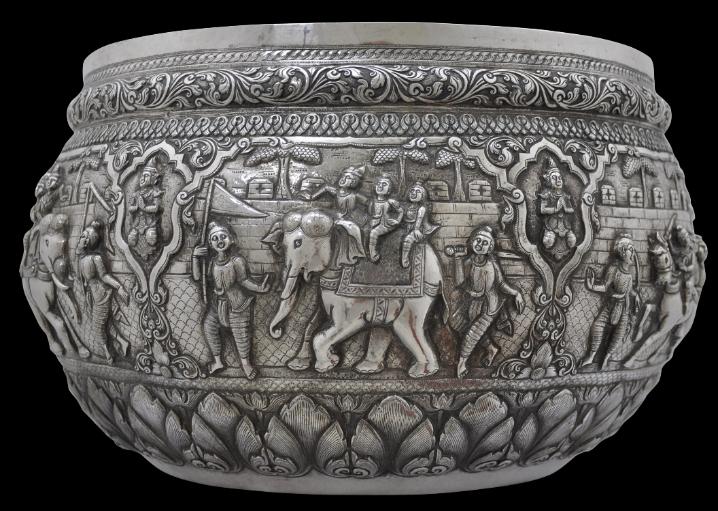
Very Large Repoussed Silver Bowl, Burma, circa 1870
Very Large Repoussed Silver Bowl
Burma
circa 1870
diameter: 35cm, height: 22.8cm, weight: 2.459kg
This unusually large Burmese thabeik bowl is of solid silver. It is repoussed and chased in high relief in an unusual schema that involves six large panels showing scenes from Burmese legend separated by dramatic cartouches of kneeling figures in Burmese dress and with clasped hands.
The scenes depicted include two with elephants, one with figures on horseback and another with a courtly family grouping.
The three-dimensional quality of the silverwork is very good, and is not quite captured in the photographs here.
Possibly, the scenes show the lead-up to a battle (rather than a battle itself) and may show the battle preparations of King Anawrahta, the first king of all Burma (reigned 1044-77), who introduced his people to Theravada Buddhism. His capital at Pagan (Bagan) on the Irrawaddy (Ayeyarwaddy) River became a prominent city of pagodas and temples. He is often depicted in Burmese artwork on horseback.
The scenes are within upper and lower borders. The upper band is raised and repoussed with three types of flowers, repeated, within a vine twist series of cartouches. The wide, lower border comprises a repeated, very vibrant vegetal motif, which is particularly well done.
The base is unmarked.
Bowls such as these had no ceremonial or religious use; they are purely decorative. Their shape is supposedly based on Burmese monks’ begging or alms
bowls (one of the eight
parikkharas or possessions allowed a monk). In turn, such bowls are based on a bowl that the Buddha himself is said to have used. But although the shape of such bowls is based on the monk’s begging bowl, ironically, Burmese monks are prohibited from touching gold or silver. Accordingly,
Burmese silversmiths did not use their skills on religious objects unlike silversmiths in other Buddhist lands such as Tibet or Sri Lanka.
Overall, this bowl is a very fine work of art. Importantly, it was acquired in the UK and most probably has been in the UK since the colonial era. It is without dents, splits or repairs. There are no holes. It has a good weight in the hand. It is also unusually large and among the largest Burmese silver bowls that we have encountered.
References
Fraser-Lu, S., Silverware of South-East Asia, Oxford University Press, 1989.
Fraser-Lu, S.,
Burmese Crafts: Past and Present, Oxford University Press, 1994.
Tilly, H.L.,
The Silverwork of Burma (with Photographs by P. Klier), The Superintendent, Government Printing, 1902.
Tilly, H.L.,
Modern Burmese Silverwork (with Photographs by P. Klier), The Superintendent, Government Printing, 1904.
Provenance
private collection, UK.
Inventory no.: 4504
SOLD

